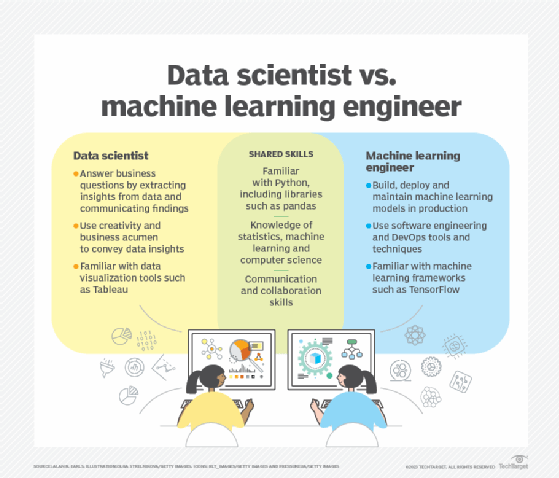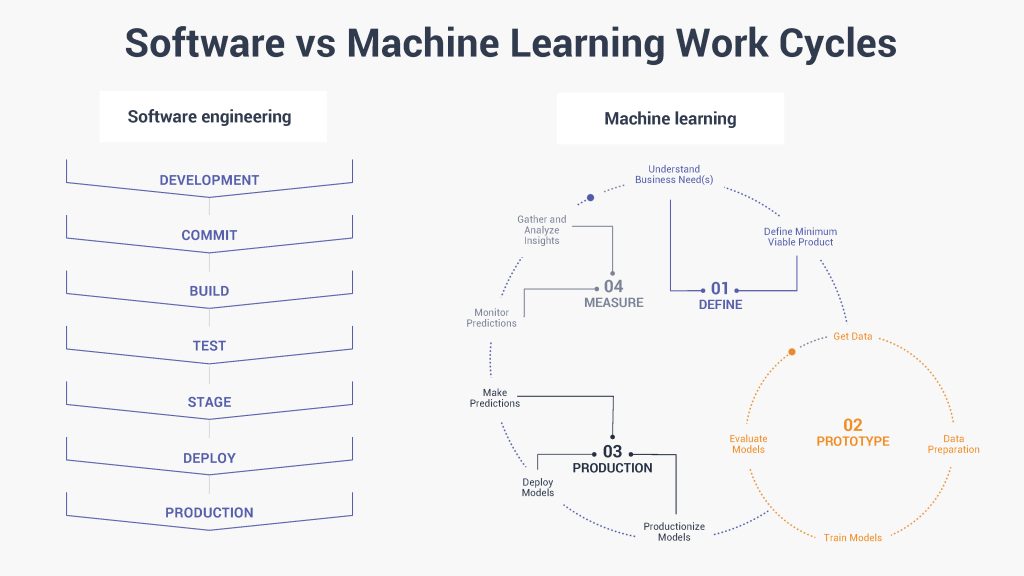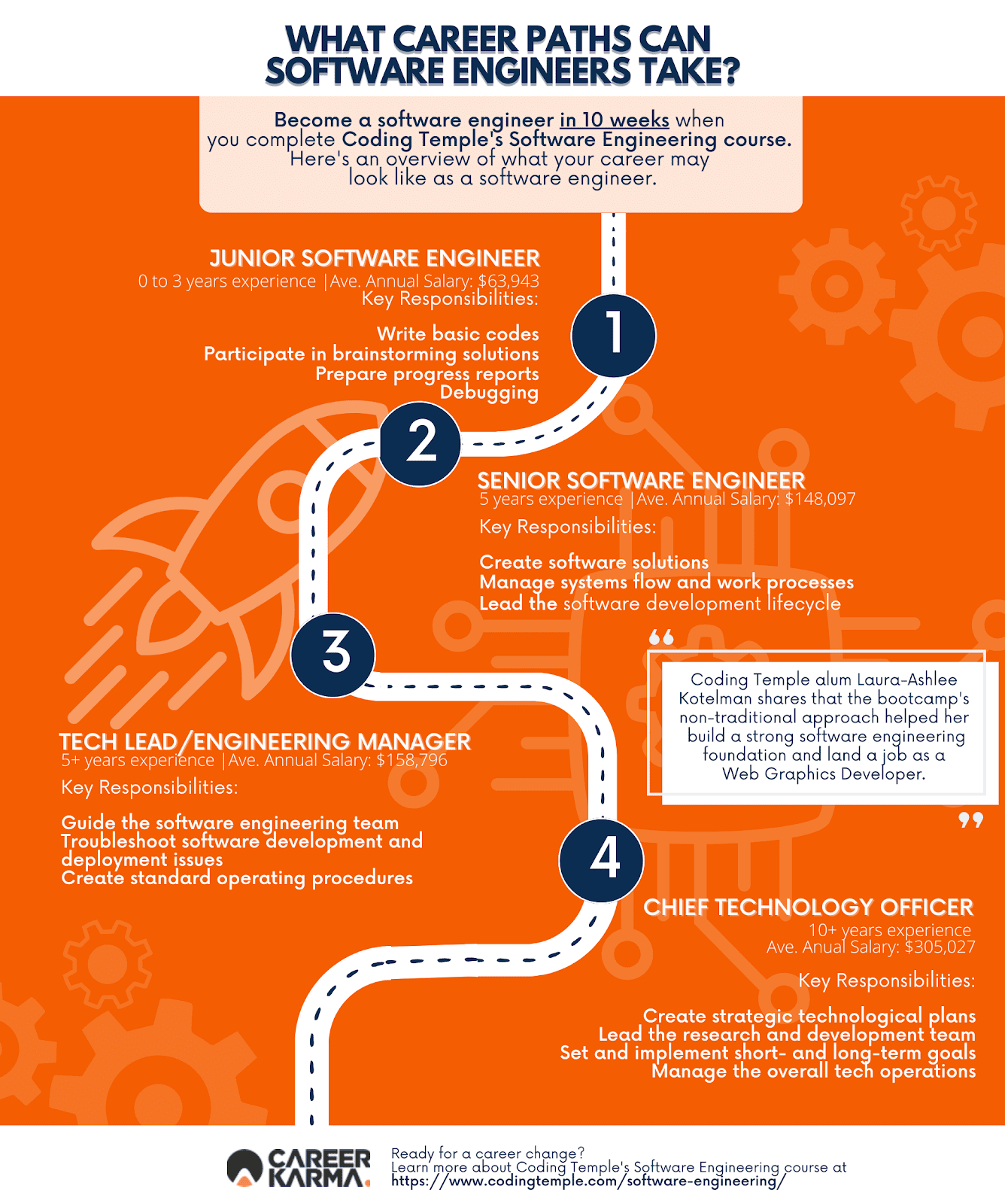All Categories
Featured
Table of Contents
- – The How To Become A Machine Learning Engineer ...
- – Machine Learning Developer for Beginners
- – Machine Learning Is Still Too Hard For Softwa...
- – Some Ideas on How I’d Learn Machine Learning ...
- – Machine Learning Online Course - Applied Mac...
- – The Ultimate Guide To Software Developer (Ai...
- – The Facts About Machine Learning Engineer Co...
Some individuals assume that that's disloyalty. If somebody else did it, I'm going to use what that person did. I'm requiring myself to think through the possible solutions.
Dig a little bit deeper in the math at the start, so I can build that foundation. Santiago: Ultimately, lesson number seven. This is a quote. It claims "You have to understand every information of a formula if you desire to utilize it." And afterwards I say, "I believe this is bullshit recommendations." I do not believe that you have to recognize the nuts and screws of every algorithm before you utilize it.
I would certainly have to go and examine back to really get a much better instinct. That does not suggest that I can not address points utilizing neural networks? It goes back to our arranging instance I think that's just bullshit advice.
As a designer, I've dealt with many, several systems and I have actually used lots of, numerous things that I do not recognize the nuts and screws of how it functions, despite the fact that I comprehend the influence that they have. That's the final lesson on that thread. Alexey: The funny point is when I think of all these libraries like Scikit-Learn the formulas they make use of inside to apply, for instance, logistic regression or something else, are not the like the formulas we examine in machine discovering classes.
The How To Become A Machine Learning Engineer - Uc Riverside Statements
Also if we attempted to learn to obtain all these fundamentals of maker understanding, at the end, the algorithms that these collections use are different. Santiago: Yeah, absolutely. I believe we need a whole lot much more materialism in the market.

Incidentally, there are two different paths. I generally talk to those that want to work in the sector that wish to have their impact there. There is a course for scientists and that is completely different. I do not risk to discuss that because I do not recognize.
Right there outside, in the industry, materialism goes a lengthy way for sure. Santiago: There you go, yeah. Alexey: It is a great motivational speech.
Machine Learning Developer for Beginners
Among the points I wished to ask you. I am taking a note to discuss progressing at coding. Yet initially, allow's cover a number of points. (32:50) Alexey: Let's start with core tools and frameworks that you need to find out to actually change. Allow's say I am a software program engineer.
I recognize Java. I recognize how to utilize Git. Possibly I recognize Docker.
Santiago: Yeah, definitely. I believe, number one, you need to start discovering a little bit of Python. Given that you already understand Java, I do not think it's going to be a big change for you.
Not since Python is the same as Java, but in a week, you're gon na get a lot of the distinctions there. You're gon na have the ability to make some progression. That's leading. (33:47) Santiago: Then you obtain specific core devices that are mosting likely to be utilized throughout your whole profession.
Machine Learning Is Still Too Hard For Software Engineers Can Be Fun For Everyone
That's a collection on Pandas for information manipulation. And Matplotlib and Seaborn and Plotly. Those three, or one of those three, for charting and displaying graphics. You get SciKit Learn for the collection of maker knowing formulas. Those are tools that you're mosting likely to have to be using. I do not advise just going and finding out about them unexpectedly.
We can talk about particular programs later. Take among those programs that are going to start presenting you to some troubles and to some core ideas of artificial intelligence. Santiago: There is a training course in Kaggle which is an introduction. I don't remember the name, yet if you go to Kaggle, they have tutorials there for free.
What's excellent about it is that the only demand for you is to know Python. They're going to offer an issue and tell you exactly how to make use of choice trees to solve that specific problem. I assume that procedure is incredibly powerful, due to the fact that you go from no equipment finding out background, to understanding what the trouble is and why you can not address it with what you understand now, which is straight software program engineering methods.
Some Ideas on How I’d Learn Machine Learning In 2024 (If I Were Starting ... You Should Know
On the other hand, ML engineers concentrate on structure and releasing device understanding versions. They concentrate on training models with information to make forecasts or automate tasks. While there is overlap, AI engineers take care of more diverse AI applications, while ML designers have a narrower emphasis on artificial intelligence algorithms and their functional execution.

Device learning designers concentrate on creating and releasing maker discovering versions into manufacturing systems. On the various other hand, data researchers have a more comprehensive function that includes data collection, cleaning, exploration, and structure versions.
As organizations progressively adopt AI and artificial intelligence modern technologies, the demand for competent professionals grows. Artificial intelligence designers work on advanced jobs, add to development, and have affordable salaries. Success in this area calls for continuous discovering and maintaining up with progressing innovations and methods. Artificial intelligence roles are usually well-paid, with the possibility for high gaining potential.
ML is basically different from conventional software advancement as it concentrates on training computer systems to find out from information, rather than programs explicit regulations that are performed methodically. Unpredictability of results: You are possibly utilized to creating code with foreseeable results, whether your function runs as soon as or a thousand times. In ML, however, the results are less certain.

Pre-training and fine-tuning: Exactly how these models are trained on vast datasets and after that fine-tuned for specific jobs. Applications of LLMs: Such as message generation, sentiment evaluation and details search and access.
Machine Learning Online Course - Applied Machine Learning Can Be Fun For Everyone
The ability to manage codebases, merge adjustments, and deal with disputes is simply as crucial in ML growth as it remains in typical software application projects. The skills developed in debugging and screening software program applications are extremely transferable. While the context may alter from debugging application logic to determining problems in data handling or design training the underlying principles of organized examination, theory testing, and repetitive refinement coincide.
Artificial intelligence, at its core, is heavily reliant on data and probability concept. These are essential for understanding just how formulas gain from data, make predictions, and evaluate their efficiency. You must consider coming to be comfortable with ideas like analytical significance, distributions, theory testing, and Bayesian reasoning in order to style and analyze models successfully.
For those curious about LLMs, a thorough understanding of deep learning architectures is useful. This includes not only the mechanics of neural networks however additionally the style of details models for various use cases, like CNNs (Convolutional Neural Networks) for picture processing and RNNs (Persistent Neural Networks) and transformers for consecutive data and all-natural language processing.
You must recognize these concerns and find out techniques for recognizing, reducing, and communicating regarding bias in ML designs. This includes the prospective impact of automated choices and the honest ramifications. Many versions, particularly LLMs, require significant computational resources that are often offered by cloud platforms like AWS, Google Cloud, and Azure.
Building these skills will not only assist in an effective change right into ML yet also ensure that developers can contribute successfully and properly to the development of this vibrant area. Concept is vital, yet nothing defeats hands-on experience. Beginning servicing projects that enable you to apply what you have actually discovered in a practical context.
Construct your tasks: Start with easy applications, such as a chatbot or a text summarization tool, and progressively increase complexity. The area of ML and LLMs is swiftly progressing, with new breakthroughs and innovations arising frequently.
The Ultimate Guide To Software Developer (Ai/ml) Courses - Career Path
Contribute to open-source jobs or write blog site articles regarding your learning trip and tasks. As you get experience, start looking for possibilities to include ML and LLMs into your work, or look for new duties concentrated on these modern technologies.

Possible usage cases in interactive software program, such as suggestion systems and automated decision-making. Understanding uncertainty, standard statistical procedures, and likelihood distributions. Vectors, matrices, and their duty in ML formulas. Error minimization techniques and gradient descent explained merely. Terms like version, dataset, features, labels, training, inference, and validation. Information collection, preprocessing methods, design training, assessment processes, and deployment considerations.
Decision Trees and Random Forests: Intuitive and interpretable models. Assistance Vector Machines: Optimum margin classification. Matching problem types with ideal models. Stabilizing performance and complexity. Standard structure of neural networks: nerve cells, layers, activation functions. Layered computation and ahead breeding. Feedforward Networks, Convolutional Neural Networks (CNNs), Reoccurring Neural Networks (RNNs). Image acknowledgment, series forecast, and time-series evaluation.
Data flow, transformation, and attribute engineering methods. Scalability concepts and performance optimization. API-driven methods and microservices assimilation. Latency administration, scalability, and variation control. Constant Integration/Continuous Deployment (CI/CD) for ML process. Design monitoring, versioning, and efficiency monitoring. Spotting and dealing with modifications in design performance over time. Attending to efficiency bottlenecks and source administration.
The Facts About Machine Learning Engineer Course Uncovered

Training course OverviewMachine knowing is the future for the following generation of software application specialists. This course works as a guide to artificial intelligence for software program designers. You'll be presented to three of the most pertinent components of the AI/ML self-control; managed learning, neural networks, and deep knowing. You'll grasp the distinctions between traditional shows and machine understanding by hands-on advancement in supervised knowing before constructing out intricate distributed applications with neural networks.
This program serves as an overview to machine lear ... Show More.
Table of Contents
- – The How To Become A Machine Learning Engineer ...
- – Machine Learning Developer for Beginners
- – Machine Learning Is Still Too Hard For Softwa...
- – Some Ideas on How I’d Learn Machine Learning ...
- – Machine Learning Online Course - Applied Mac...
- – The Ultimate Guide To Software Developer (Ai...
- – The Facts About Machine Learning Engineer Co...
Latest Posts
How To Crack The Front-end Developer Interview – Tips For Busy Engineers
The Best Faang Interview Preparation Courses In 2025
5 Ways To Use Chatgpt For Software Engineer Interview Preparation
More
Latest Posts
How To Crack The Front-end Developer Interview – Tips For Busy Engineers
The Best Faang Interview Preparation Courses In 2025
5 Ways To Use Chatgpt For Software Engineer Interview Preparation